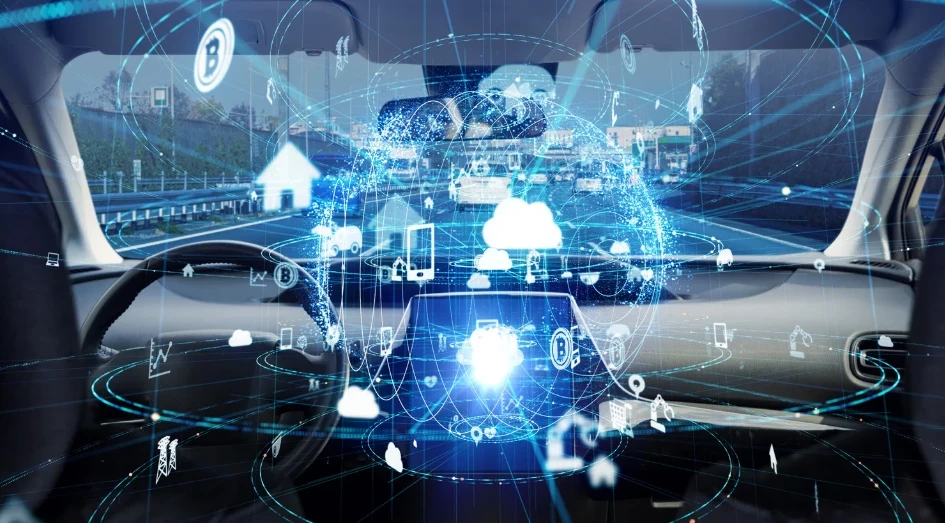Cost Concerns over Technology behind ADAS
Add bookmarkThe growing amount of electronic systems in today’s vehicles require the high speed transfer of increasing amounts of data, and more sophisticated networks and ECU’s to manage ever more complex vehicle controls and systems. Communication networks have become a critical component of electronic architecture in modern vehicles, and as we move towards assisted and autonomous driving the demands are only set to increase.
360 degree sensing and highly advanced chassis sensors will lay the groundwork for the next generation of driver assistance systems, but how much will the electronic architecture of the car need to change to accommodate them? How will the cost of different sensors and communication networks affect manufacturer’s choice of components? And how much, if any, extra cost will be passed on to the consumer?
One of the key issues for manufacturers is the communication network that links the various sensors and control units. The traditional CAN Bus network is limited in terms of data transfer speed, but remains the prominent network in the majority of mid-range vehicles. The Flexray automotive bus has been used increasingly over the last few years in high-end vehicles, providing much faster data transfer, but the overall costs remain prohibitive for mainstream production. However, for ADAS and autonomous driving to develop, the use of high speed networks will be crucial, and the cost issues must be resolved.
Sensor technology
A variety of new technologies have developed in driver assist systems in recent years. Systems such as collision prevention, lane-keeping assistance, parking assistance, traffic jam assist, and adaptive cruise control rely on a number of different sensors throughout the vehicle. Sensor technology is advancing accordingly, but cost remains an important issue.
Long and short range radar is used extensively in ADAS, and while radar has its limitations it is relatively cost-effective. Typical applications for radar include collision prevention and traffic management systems. Ultrasonic sensors are also widespread, and used in applications such as parking assistance. LIDAR sensors, such as those used in Google’s self-driving car offer much more data, but are currently too expensive for use in mass manufacturing.
Radar is particularly good at detecting the common driving situations that represent a crash risk, but does not perform as well when it comes to detecting and classifying other potential hazards such as cyclists, pedestrians or roadside barriers. LIDAR enables real-time detection and classification of these types of hazards, as well as many other elements related to driving such as lane markings, road signs and signals, and roadside debris. However, with the LIDAR suite used on the Google car reported to cost $70,000, it would require a significant growth in demand to drive down the price of LIDAR equipment for mainstream production.
A cost-effective compromise has been to fuse less expensive radar with other non-active sensors such as affordable camera-based computer vision systems, which improves sensing reliability and allows for more complex assistance systems. The next generation of ADAS to hit our roads will incorporate relatively inexpensive multi-radar and camera sensor arrays, which will provide limited semi-autonomous driving capabilities.
Vehicle communication networks
CAN bus is the most common in-vehicle network in production today, with a typical data transfer rate of 1Mb/s. It is the primary bus for applications such as engine timing controls, anti-lock braking systems, and power train controls.
The Local Interconnect Network (LIN) was developed as a cost-effective alternative to CAN for applications that don’t require the full speed and capabilities of CAN. A lower data transfer rate of 20Kb/s is used for non-critical functions such as window controls, door locks, and seat and mirror controls.
The Flexray bus offers data transfer speeds of up to 10Mb/s and can provide the necessary infrastructure for electronic systems such as steer-by-wire, as well as the platform for more advanced functions in ADAS. It is already being used in several high-end vehicles and as the cost of systems gradually decreases, it will become more viable for use in mid-range vehicles.
The Media Oriented Systems Transport (MOST) is a 150Mb/s ring bus used for multimedia applications. Developments in Ethernet technology are also being watched closely by the automotive industry, as we will discuss later.
BMW have been at the forefront in this arena since the 2007 X5 model was the first to incorporate a Flexray system to control the vehicle electronics. The introduction of the latest model of the X5 saw BMW become the first OEM to commercialize Ethernet for a 360-degree camera parking assist system. The technology is in partnership with Freescale Semiconductor Inc. and based on Broadcom’s BroadR-Reach technology. BroadR-Reach is a PHY developed by Broadcom to support 100Mb/s Ethernet, and is also set to be adopted by Hyundai for future vehicles. As part of the OPEN Alliance, Broadcom aims to promote BroadR-Reach as an automotive Ethernet standard.
NXP
One of the largest suppliers of electrical components and systems to the automotive industry, NXP, has licenced the BroadR-Reach patent and is developing its TJA1100 100Mb/s PHY, having already demonstrated a sample PHY operating with a Broadcom system.
NXP is the leading supplier of Flexray transceivers to the industry, and has been active in Flexray development for over 10 years. However, with the landscape of electronic development changing all the time, the company is also attempting to stay at the forefront of development in both arenas.
While CAN bus remains the predominant network system and Flexray continues to suffer from cost issues, ethernet becomes an increasingly viable option, but it is not yet clear if either can take over from CAN as the system for the next generation of vehicles.
Ethernet
With high-bandwidth applications becoming more common in vehicles, Ethernet is showing the potential to eclipse both CAN and Flexray as the preferred system for future electronic architecture as it has the capability to support data transfer for advanced driver assistance and autonomous driving. Research by ABI suggests that ethernet market penetration in the car industry could rise from its current 1% share to 40% by 2020, driven largely by data-rich applications for driver assistance systems, the deployment of additional sensors throughout the vehicle, automated driving, and connected infotainment.
Current radar systems collect data and analyse it locally before sending the processed results to a control unit. Ethernet could offer the potential to send raw data directly from the sensors to a central ECU where several inputs provide data to be measured to produce an overall result. Reducing the amount of ECU’s in the vehicle and speeding up data analysis.
There is still much development to come before Ethernet can reach that level, but with traffic to and from our vehicles set to increase with the introduction of LTE, it seems the logical next step to enable the level of data transfer required to support advanced driver assistance systems along with all the other electronic systems in our vehicles.
Summary
The question of cost is a huge factor in the development of ADAS and therefore the sensors and technology surrounding them. It is a difficult decision for manufacturers to make as to how much technology to introduce in their vehicles and how much cost to pass on to the customer. How much the consumer is willing to pay for the extra technology for ADAS is difficult to answer, as the benefits will be appealing to some more than others. For example, those who spend the majority of their time in urban traffic may think that traffic assistance systems are worth the extra money, but those who drive in rural areas will place little importance on the system.
The technology in sensors, software and hardware for driver assistance systems continues to develop, however, and new technologies will require faster data transfer to manage the systems. Manufacturers will look to take a holistic approach to the problem, and develop the most advanced systems possible within the boundaries of cost. Systems such as LIDAR which are currently too expensive for mass production may drop in cost as the technology develops and demand increases. Flexray bus architecture is an ideal next step for manufacturers as it provides up to 10Mb/s, but the cost of compatible sensors and components has put some manufacturers off and CAN is still the staple of the industry.
Other manufacturers, such as BMW, have embraced new technology as it has emerged in this sector, and the first use of Ethernet in the latest X5 model may be a pre-cursor for the developments to come in the next few years. As 360-degree cameras and sensors become more common in ADAS, high speed data transfer will be crucial. For OEM’s the question is which technologies can they afford to introduce and which will be acceptable to consumers if there is a reflection in price. For the moment at least, it seems that one or two may be content to keep a watching brief to see how the different technologies develop.






















